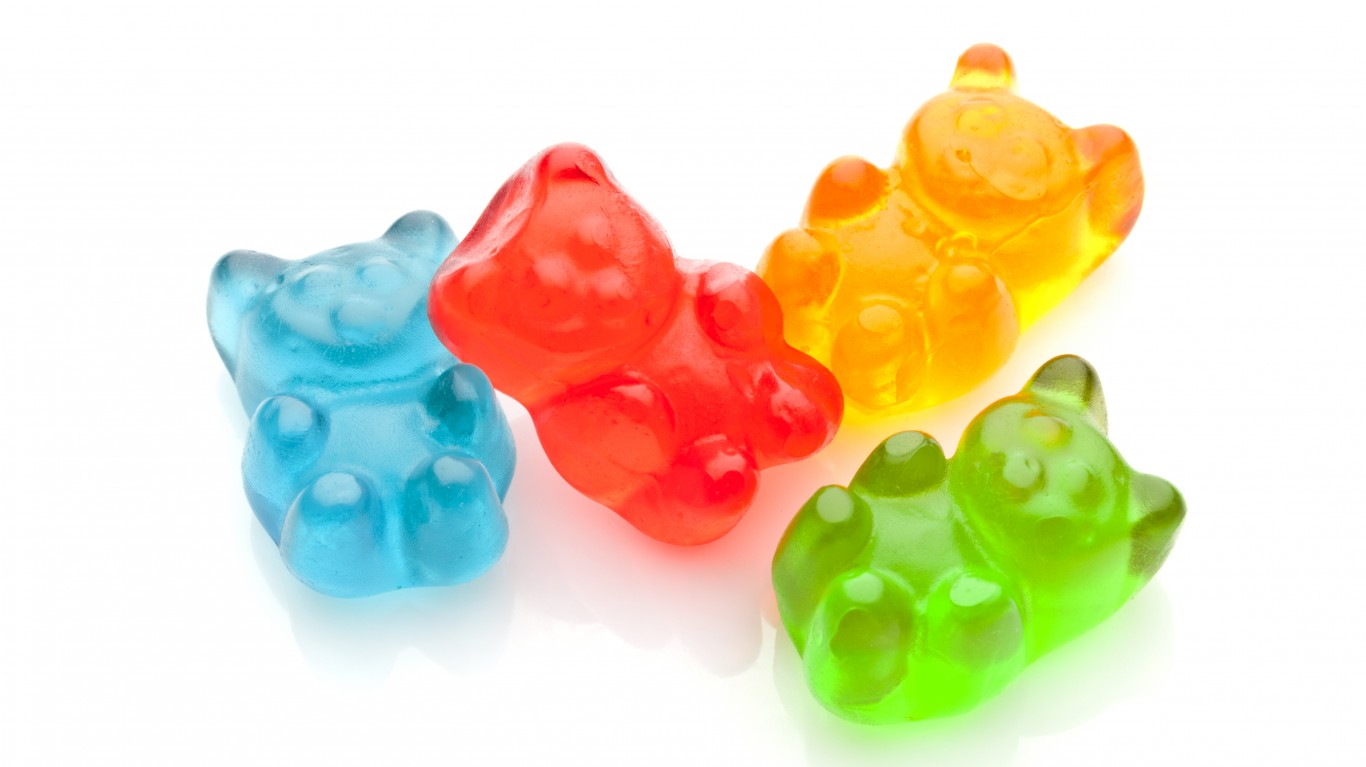
To be clear, the 10 gummy bear brands to avoid we’re focusing on are your average, ordinary, kid-appropriate gummies, not the extraordinary adult variety. Despite their irresistible chewiness, vibrant colors, and symphony of fruity flavors, even the finest gummy bears fall short when it comes to nutrition. These delectable treats may satisfy your sweet tooth, but their ingredient lists are often dominated by sugar, and artificial flavors and colors. And the sugar-free varieties, the ones that won’t rot your teeth or give you diabetes? They’re likely to rot your gut. There are simply some foods that will never be healthful. Gummy bears are one of them. Sorry, but it’s true. And while they may provide a serving of vitamin C, don’t believe for a second that gummies are an adequate substitute for fruit, even though their labeling may suggest otherwise.
As you may have surmised, our metric for determining the 10 gummy bear brands to avoid is nutrition-based, not flavor-oriented. The American Academy of Pediatrics recommends that before their second birthday, babies should receive zero grams of sugar. No sugar. After they turn two, the Academy recommends limiting their daily sugar intake to 25 grams (6 teaspoons) or fewer. Beyond causing tooth decay and diabetes, over-indulgence of sugar can lead to a range of unsavory health consequences. Consumed in excess, sugar causes weight gain and an increased risk of heart disease, elevated blood pressure, and inflammation. Mood, too, can be affected by fluctuations in blood sugar levels contributing to irritability and anxiety.
The Academy’s view on artificial sweeteners is that more research needs to be done and that their use should be limited. Artificial flavors and colors are also concerning. So, with those factors in mind, we present 24/7 Wall St.’s list of 10 gummy bear brands to avoid, from bad to worse.
10. Surf Sweets Organic Fruity Bears
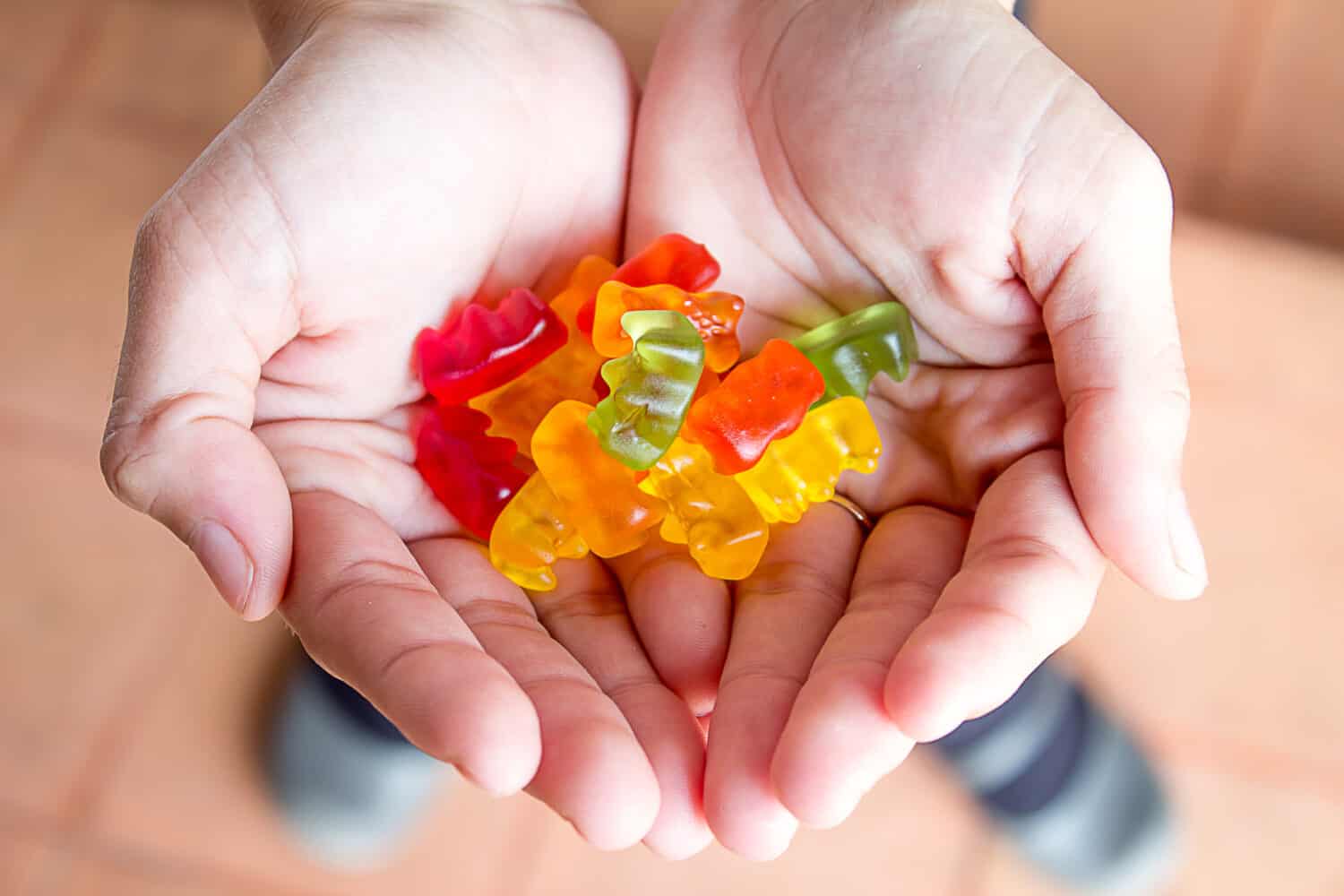
- parent/owner: Wholesome Sweeteners
- amount of sugar per serving: 23 g /92% daily allowance
- concerning ingredients: sugar
Sugar
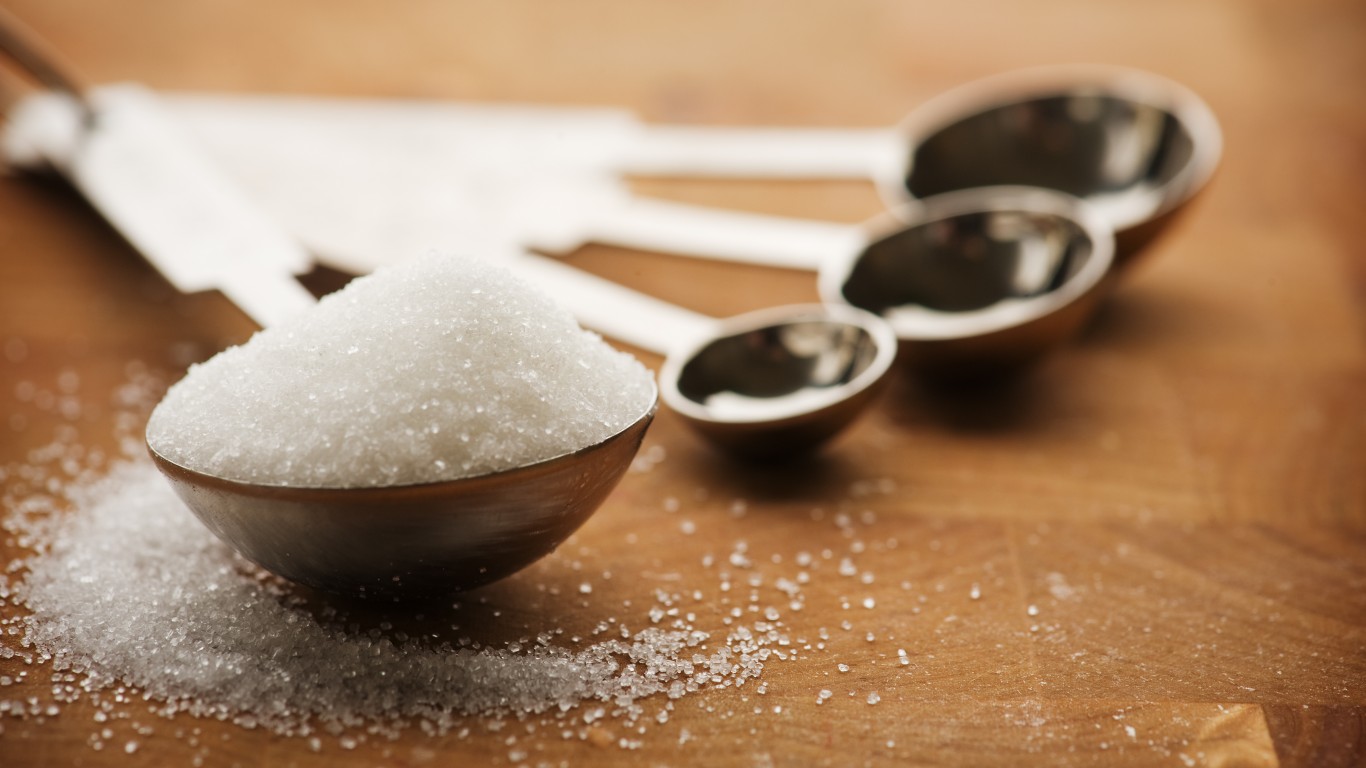
If you absolutely can’t live without gummies, Surf Sweets aren’t terrible. They are made with organic cane sugar, and they derive their colors and flavors from natural sources like black carrot juice concentrate. However, the ingredient list includes the recommended daily % for everything except sugar. A serving of Surf Sweets gummy bears provides 92% of the recommended daily amount of sugar. A serving size of Surf Sweets gummies is 16 pieces, which seems more than sufficient – as in 1/2 a serving (8 gummies) would probably sate a little appetite. A full serving of Surf Sweets provides 100% recommended vitamin C, but so does an orange, with approximately 12 grams of sugar.
Bottom line: If you need a gummy fix, Surf Sweets hang ten.
9. LifeSavers Gummies
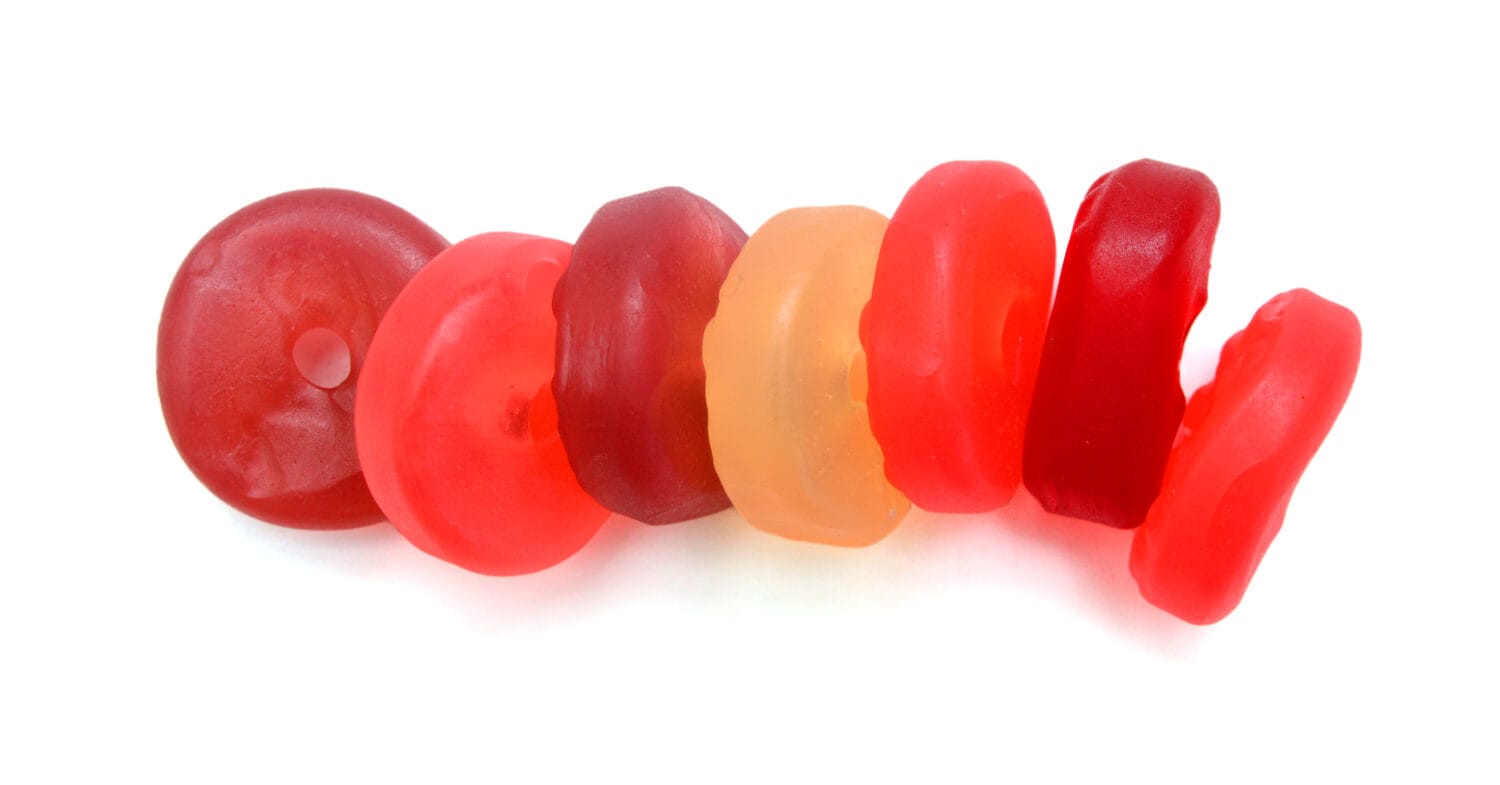
- parent/owner: Mars
- amount of sugar per serving: 18 g / 72% daily allowance
- concerning ingredients: corn syrup as glucose, sugar, red 40, yellow 5, blue 1
It’s Not Really Sugar and They’re Not Really Bears
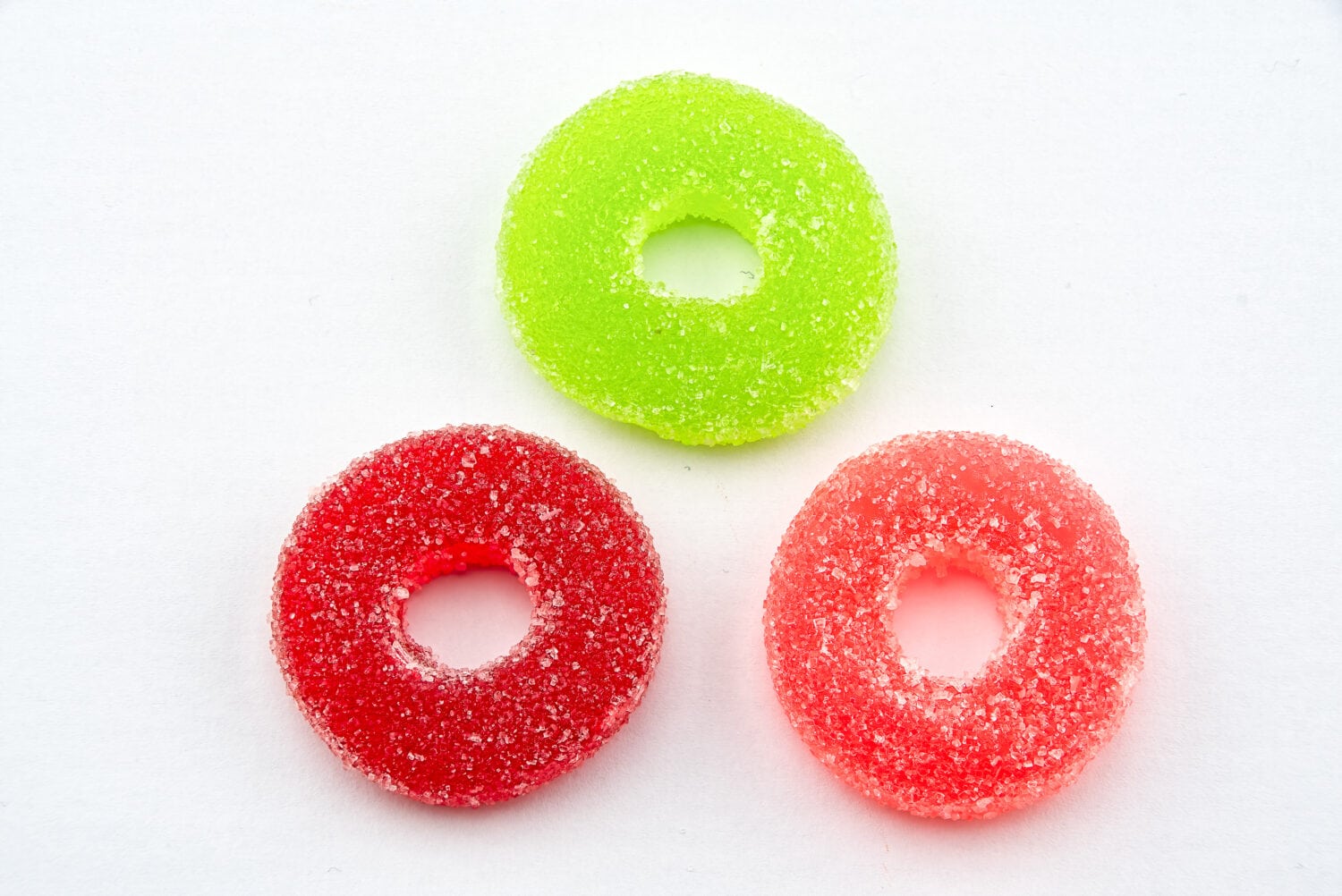
Sugar is an ingredient in LifeSavers Gummies, but it’s listed after corn syrup, a sugar substitute. Corn syrup shouldn’t be cornfused with high fructose corn syrup. Corn syrup is glucose, while high-fructose corn syrup has had the majority of it’s its glucose converted to fructose from the addition of enzymes. Beyond the 72% of daily sugar they supply, LifeSavers Gummies are artificially colored with the red 40, yellow 5, and blue 1 trifecta, the three primary colors from which all other colors are made. Also, for the sake of transparency, LifeSavers Gummies, aren’t bear-shaped, they O shaped, just like the original LifeSavers hard candy.
Bottom Line: LifeSavers is a misnomer in this case, as these gummies are prone to cause more harm than good.
8. Brach’s
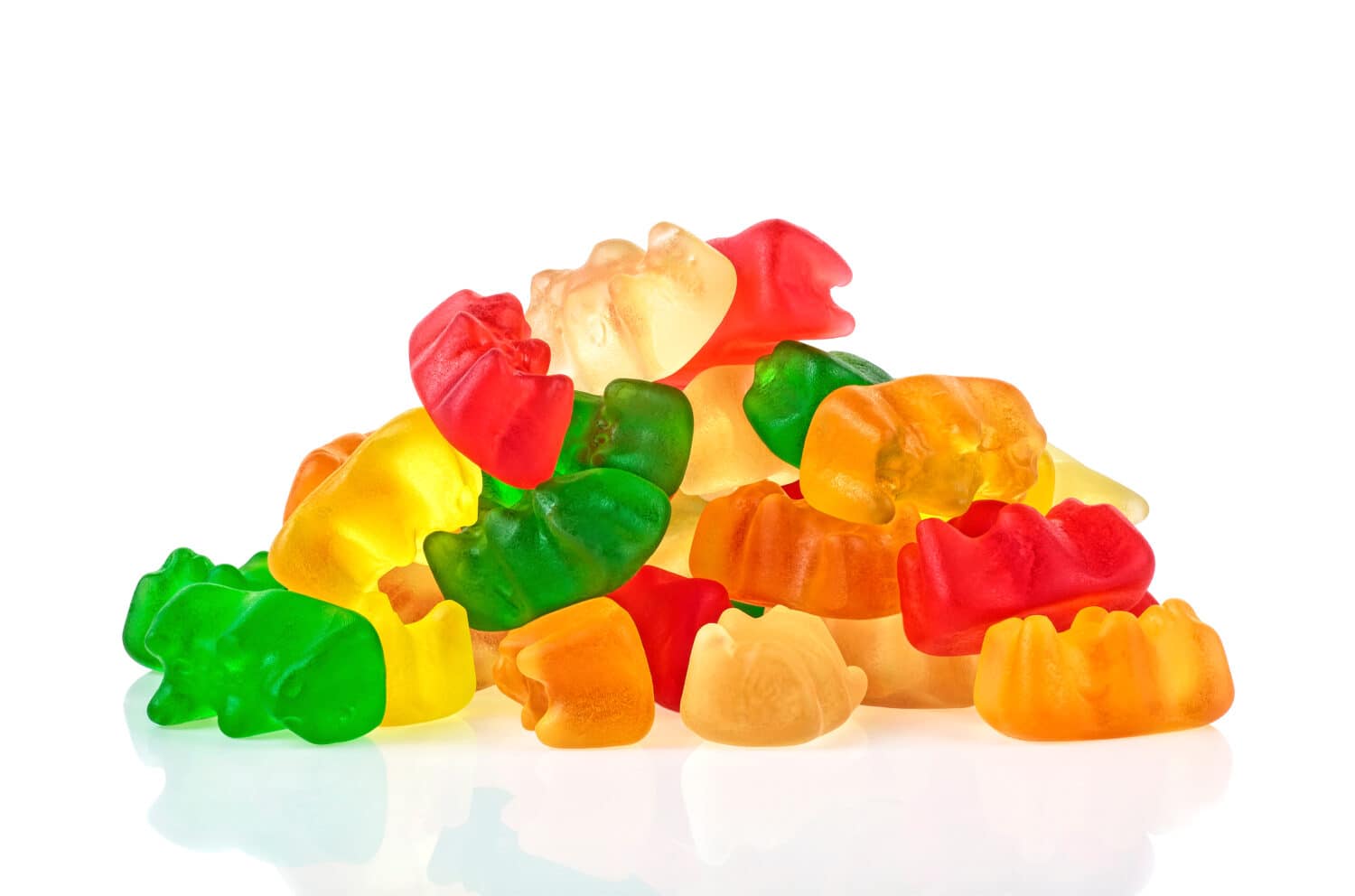
- parent/owner: Ferrara Candy Company
- amount of sugar per serving: 13 g /50% daily allowance
- concerning ingredients: corn syrup, sugar, gelatin, modified food starch (corn), apple juice concentrate, artificial flavors, carnauba wax, red 40, yellow 5, blue 1
How Many Ways Can You Say Sugar?

Seriously, though, how many ways can you say sugar? On one label? Corn syrup is technically glucose and apple juice concentrate is considered added sugar. And yet a serving of Brach’s Gummy Bears on has 13 grams of sugar, which is a little over half a day’s supply. Not too bad. However, Brach’s also the aforementioned food dyes, along with artificial flavors, which can be who knows what. Brach’s adds in a little carnauba wax, which can cause gastrointestinal irritation, aka a tummyache, in sensitive individuals.
Bottom line: Why tempt the tummyache gods? Steer clear of carnauba wax.
7. Haribo
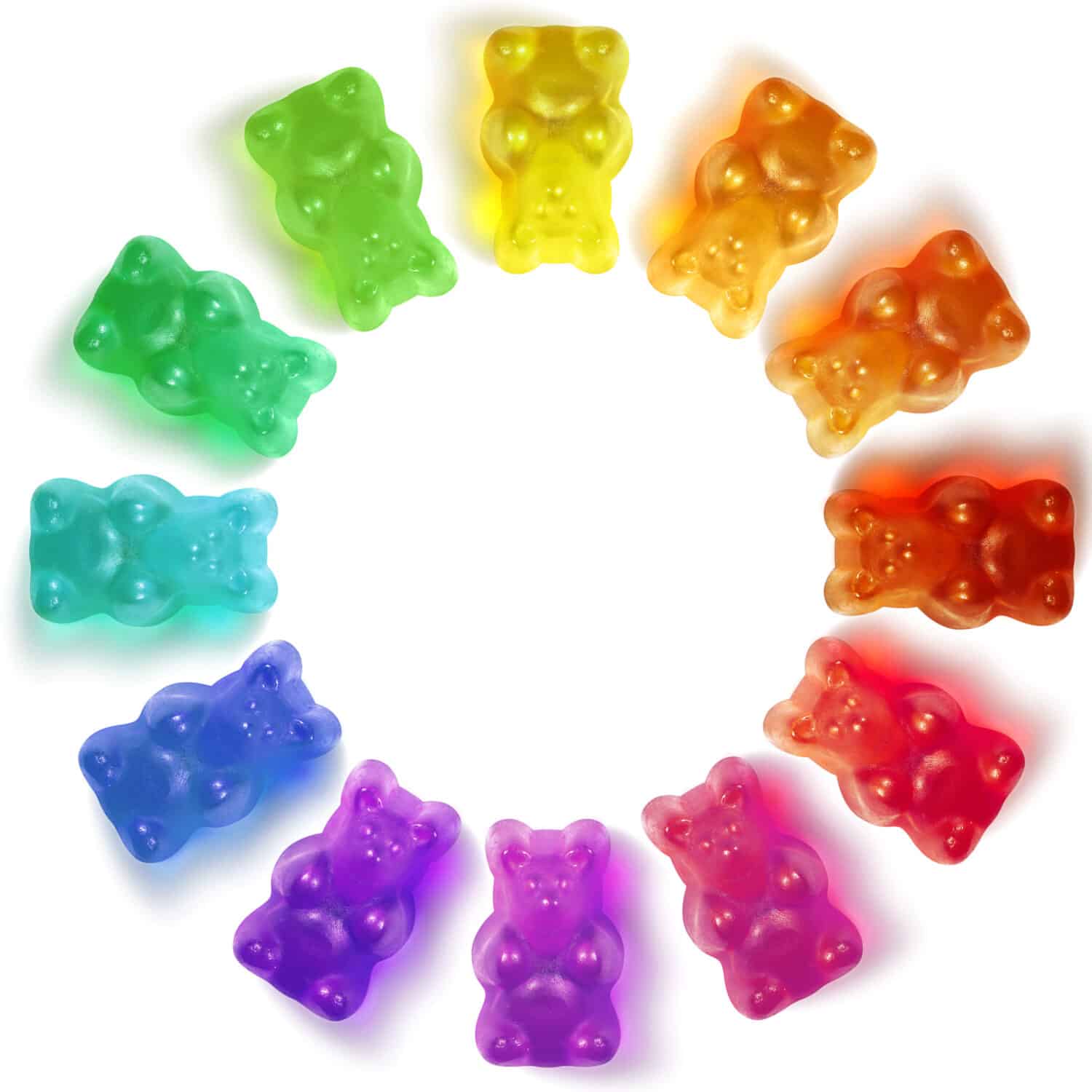
- parent/owner: Hans Riegel
- amount of sugar per serving: 14 g/56% daily allowance
- concerning ingredients: glucose syrup (from wheat or corn), sugar, dextrose (from wheat or corn), artificial flavors, palm kernel oil, yellow 5, red 40, blue 1
Save the Rain Forests

Though you’d think all gummy bears are gluten-free, Haribo, the original aren’t. The original gummy bears contain glucose and dextrose that is possibly sourced from wheat. With 14 grams (56 % daily allowance) per serving of sugar, Haribo is on the lowish side for gummies. Admittedly not a nutritional concern, palm kernel oil is an environmental concern. The demand for palm kernel oil is responsible for deforestation and habitat destruction, including those of the endangered pygmy elephant, Sumatran rhino, and orangutans.
Bottom line: Do a rhino a favor. Don’t buy gummies that contain palm kernel oil.
6. Kiss My Keto
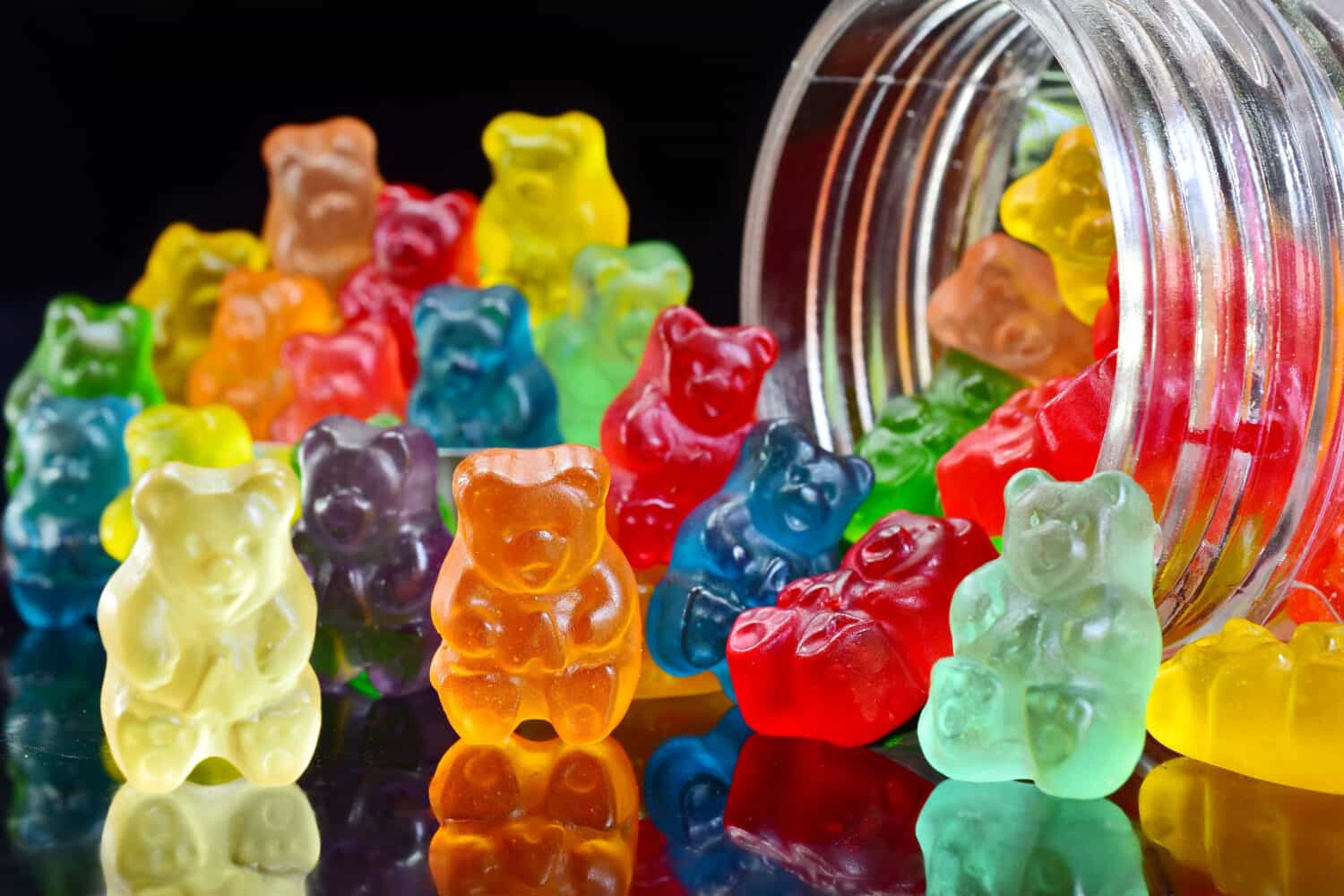
- parent/owner: Alex Bird/Michael Herscu
- amount of sugar per serving: less than 1 gram/sugar alcohols 7 g.
- concerning ingredients: Soluble Corn Fiber Syrup, Erythritol
Kiss My Bloodclot
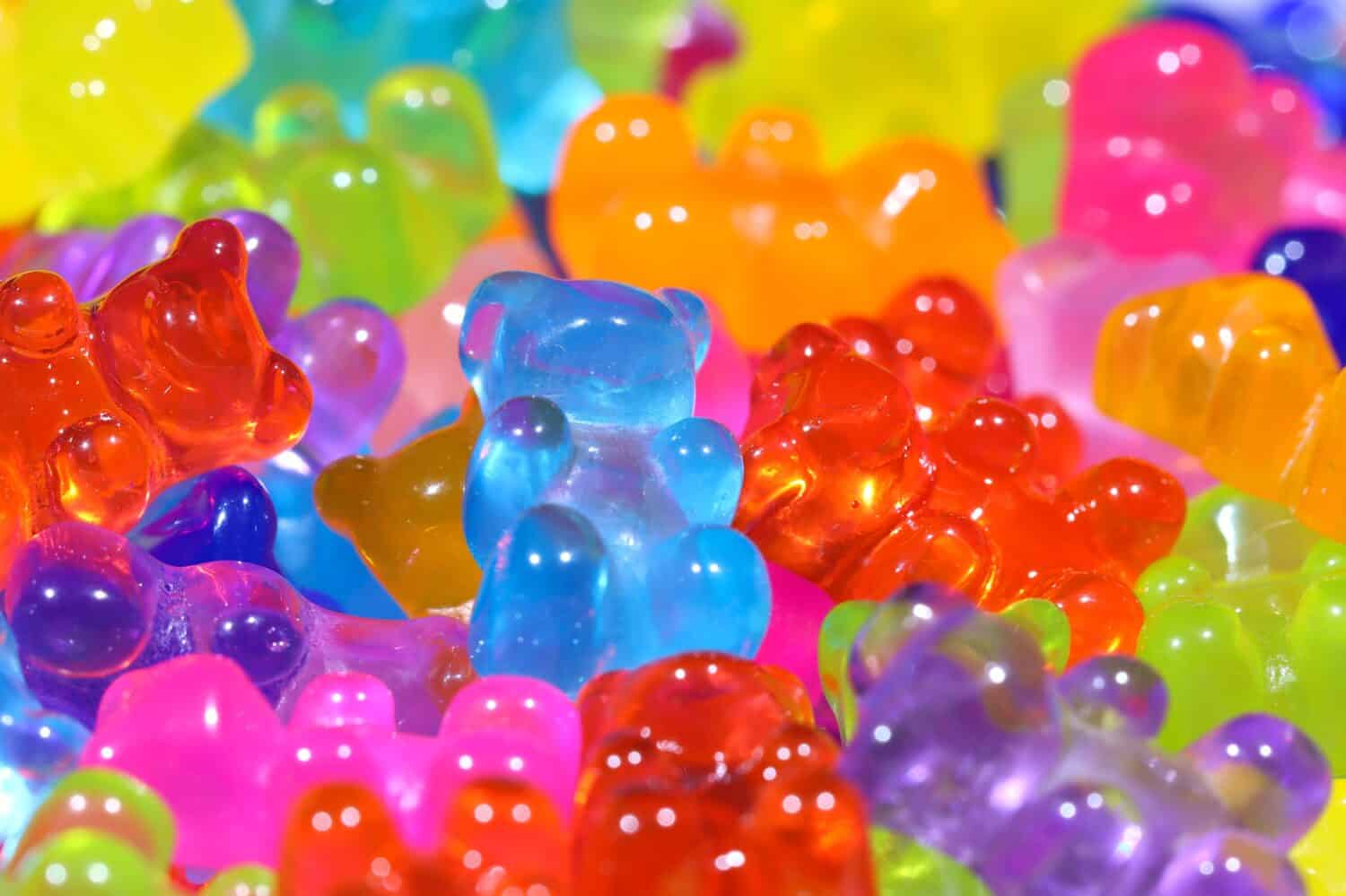
Sugar alcohol occurs in foods like berries, and is used as a sugar substitute, providing about one-half to one-third fewer calories than regular sugar. Erythritol, the sugar substitute in Kiss My Keto, is concerning for several reasons. Ingested in large amounts ( like say, gorging on a bag of gummies…) erythritol can cause GI distress in the form of bloating, cramping, nausea, and diarrhea. Research is also finding that erythritol seems to increase the risk of developing blood clots, which increase the risk of heart attacks and strokes in sensitive individuals. Also, sugar alcohols need to be considered by diabetics, especially type one diabetics.
Bottom: Alex Bird created Kiss My Keto gummies upon discovering he carries the BRCA cancer gene. And while Kiss My Ketos might be a good choice for BRCA carriers, it appears that they pose other health risks.
5. Joyride Sour Gummy
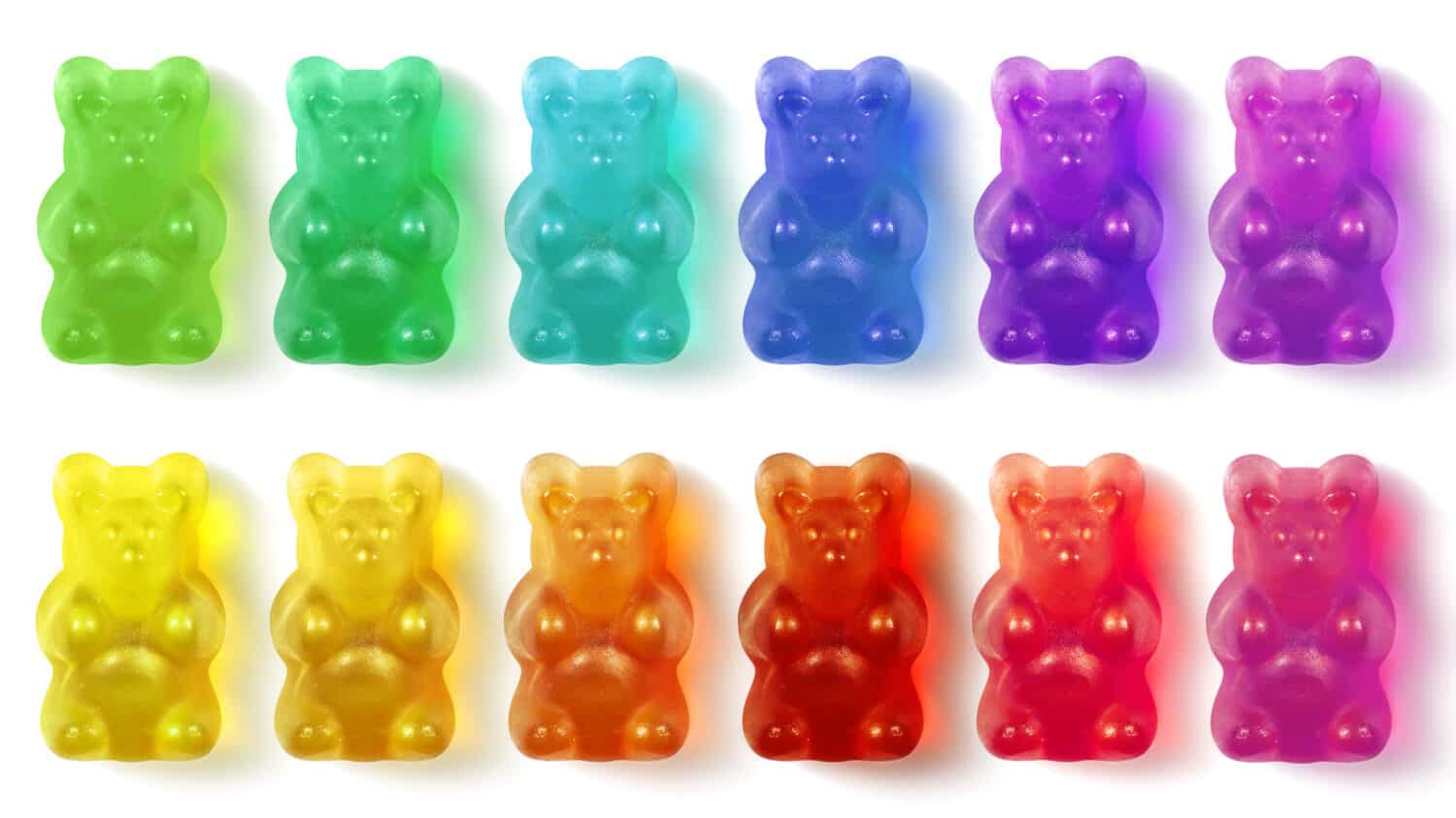
- parent/owner: Tyler Merrick
- amount of sugar per serving: 3 g / 12% daily allowance
- concerning ingredients: soluble corn fiber, allulose, organic cane sugar, rice flour, tumeric (sic) and spirulina extracts for color, stevia extract.
Joyriding to the WC

With just 3 grams of sugar per serving, Joyride gummies won’t give you cavities or diabetes, but they may give you something almost as sinister: the runs. With 19 grams of fiber per serving, you won’t want to over-indulge. The sugar substitute allulose is also apt to give you the trots. Props for no artificial colors or flavors, but it’s turmeric, not tumeric (sic).
Bottom line: Merrick’s goal was to create a healthful vegan candy. Go back to the drawing board, Tyler, this ain’t it.
4. Alani Gummies
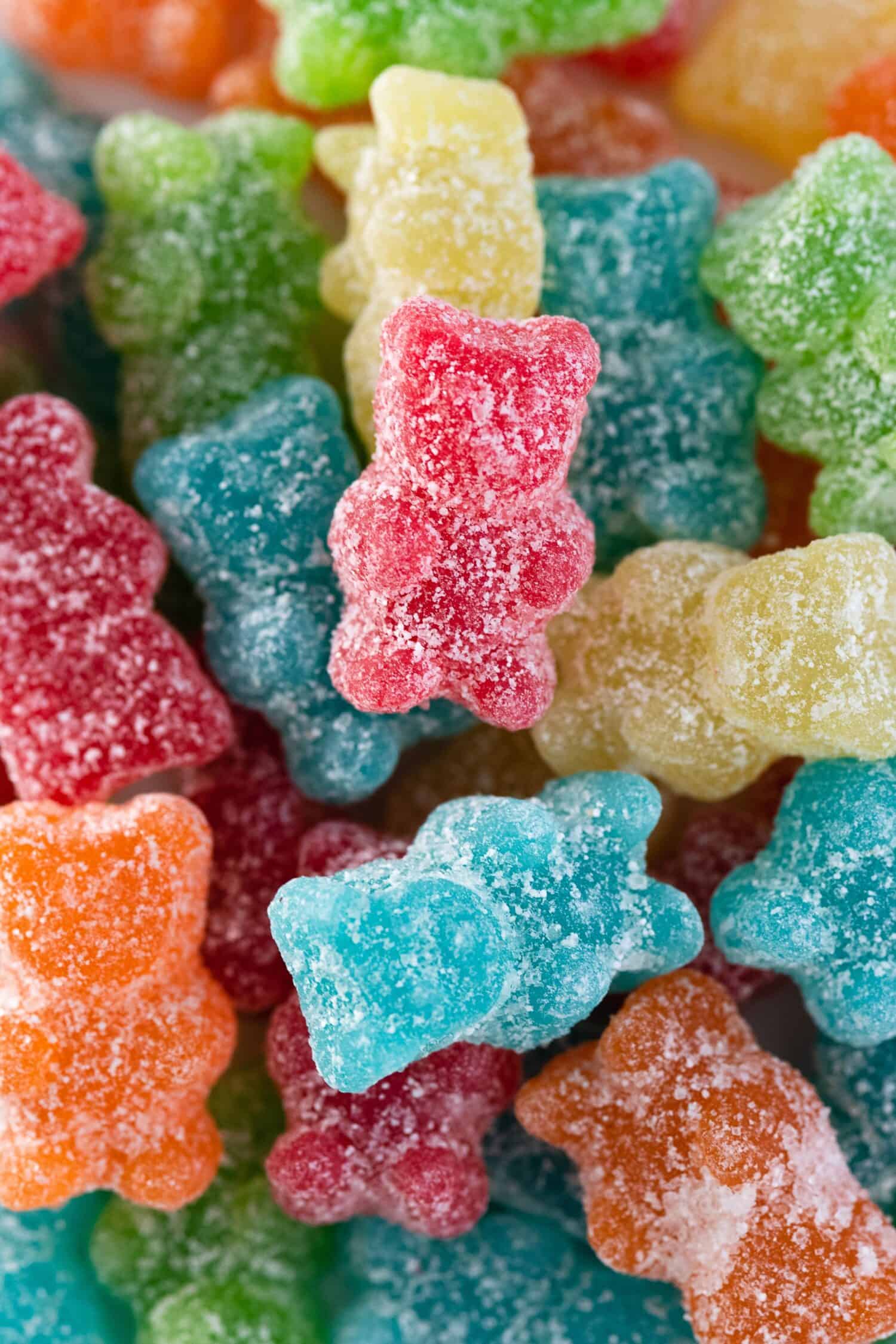
- parent/owner: Congo Brands
- amount of sugar per serving: 2 g/ 8% daily allowance
- concerning ingredients: isomalto-oligosaccharide, allulose, soluble corn fiber, modified potato starch, cane sugar, stevia extract
How Many Sweeteners Does it Take to Make A Gummy?
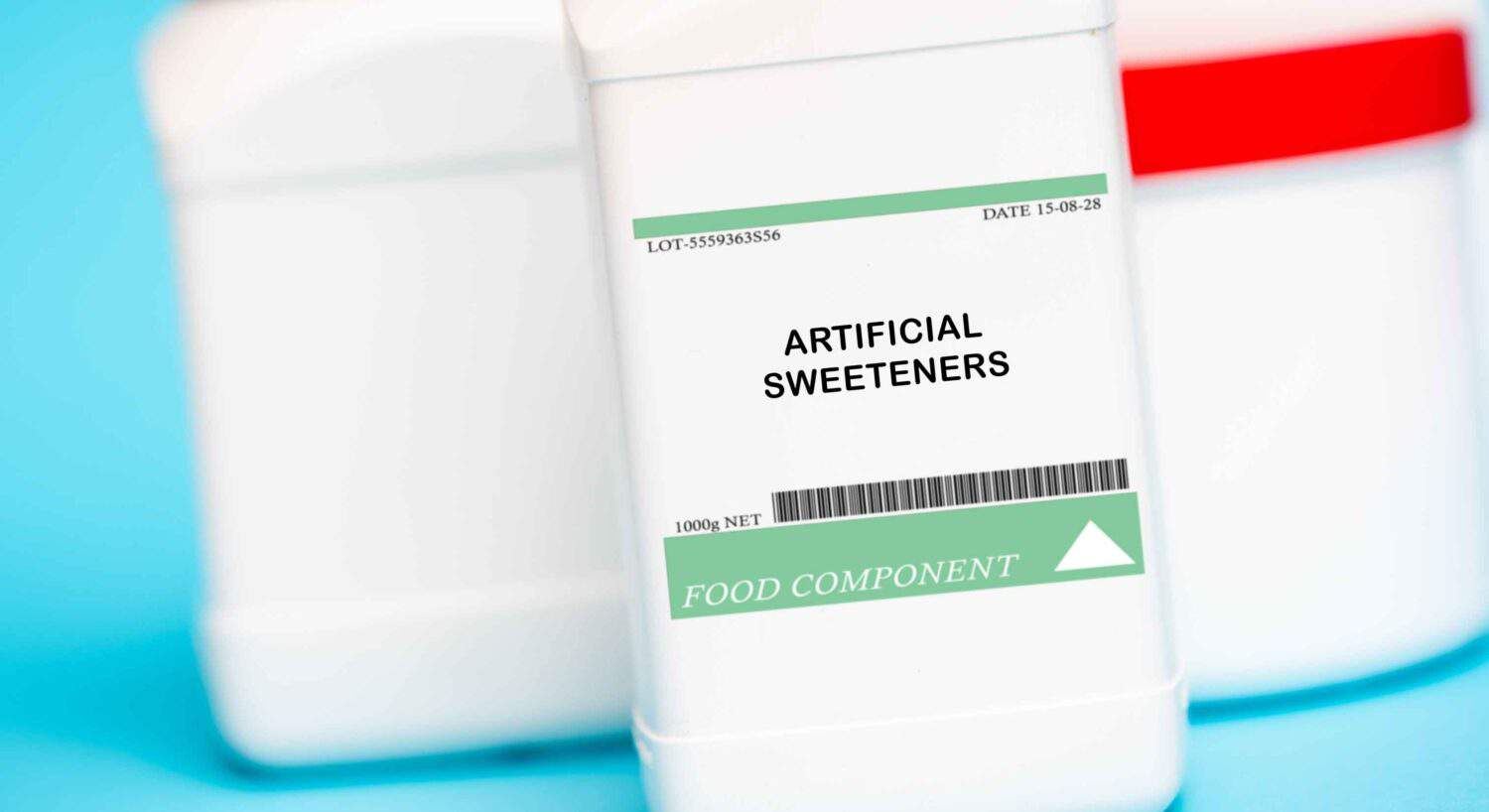
Alani gummies are basically a big glob of sugar substitutes fashioned into a bear. They might be yummy, but between the allulose and the isomalto-oligosaccharide, it’s imperative that you not over-indulge, unless loose stools are your objective. While not all sugar substitutes are not considered artificial it’s important to remember that natural doesn’t always mean safe. Snake venom is natural. Ricin is natural. So while isomalto-oligosaccharide and allulose are both natural, that doesn’t mean they are good for you or free of consequences.
Bottom Line: If you overindulge, your bum will not be pleased.
3. Smart Sweets
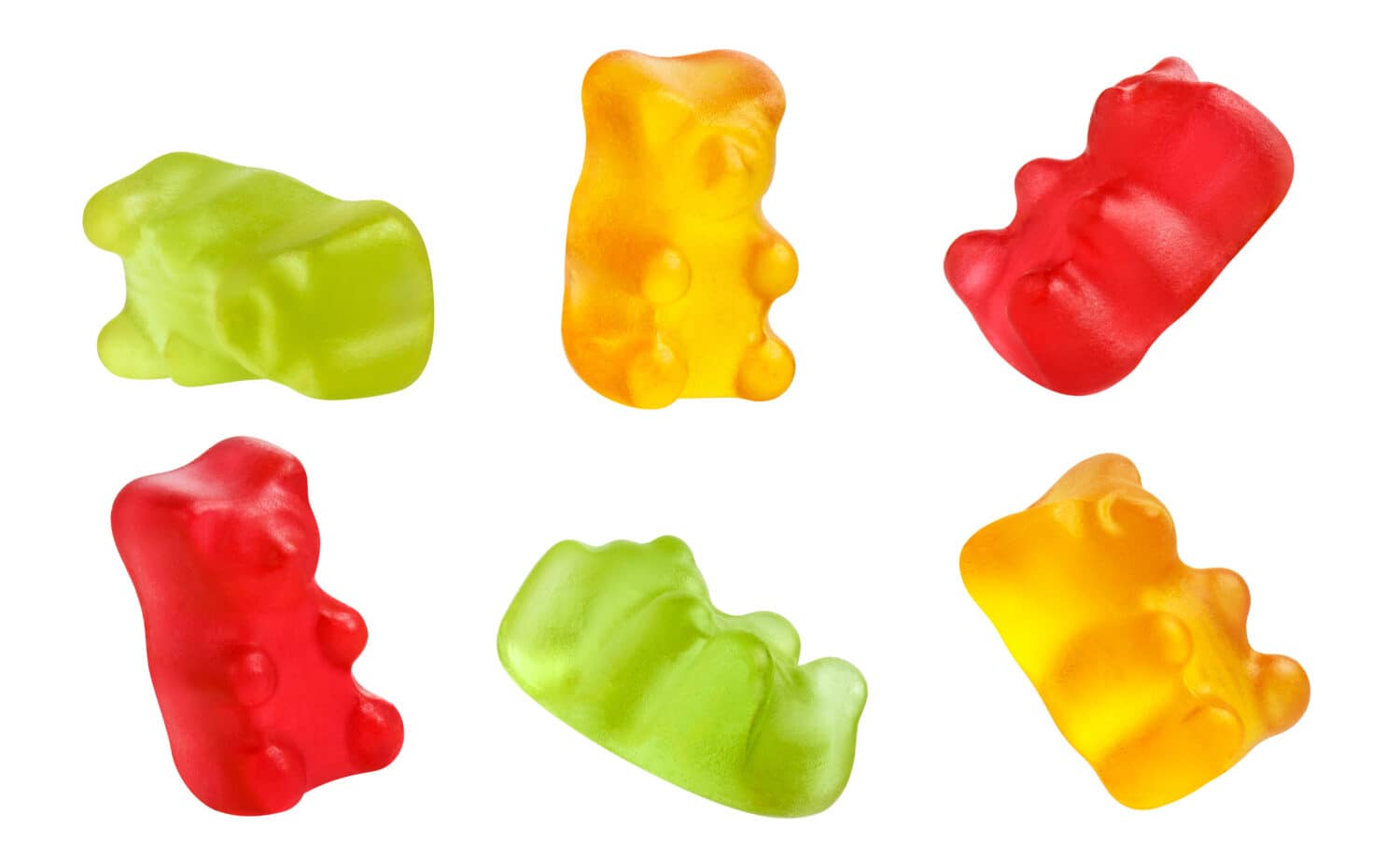
- parent/owner: Tara Bosch
- amount of sugar per serving: 4 g/16% daily allowance
- concerning ingredients: isomalto-oligosaccharides (vegetable source), allulose, non-GMO soluble tapioca fiber, gelatin
Alternative Laxative
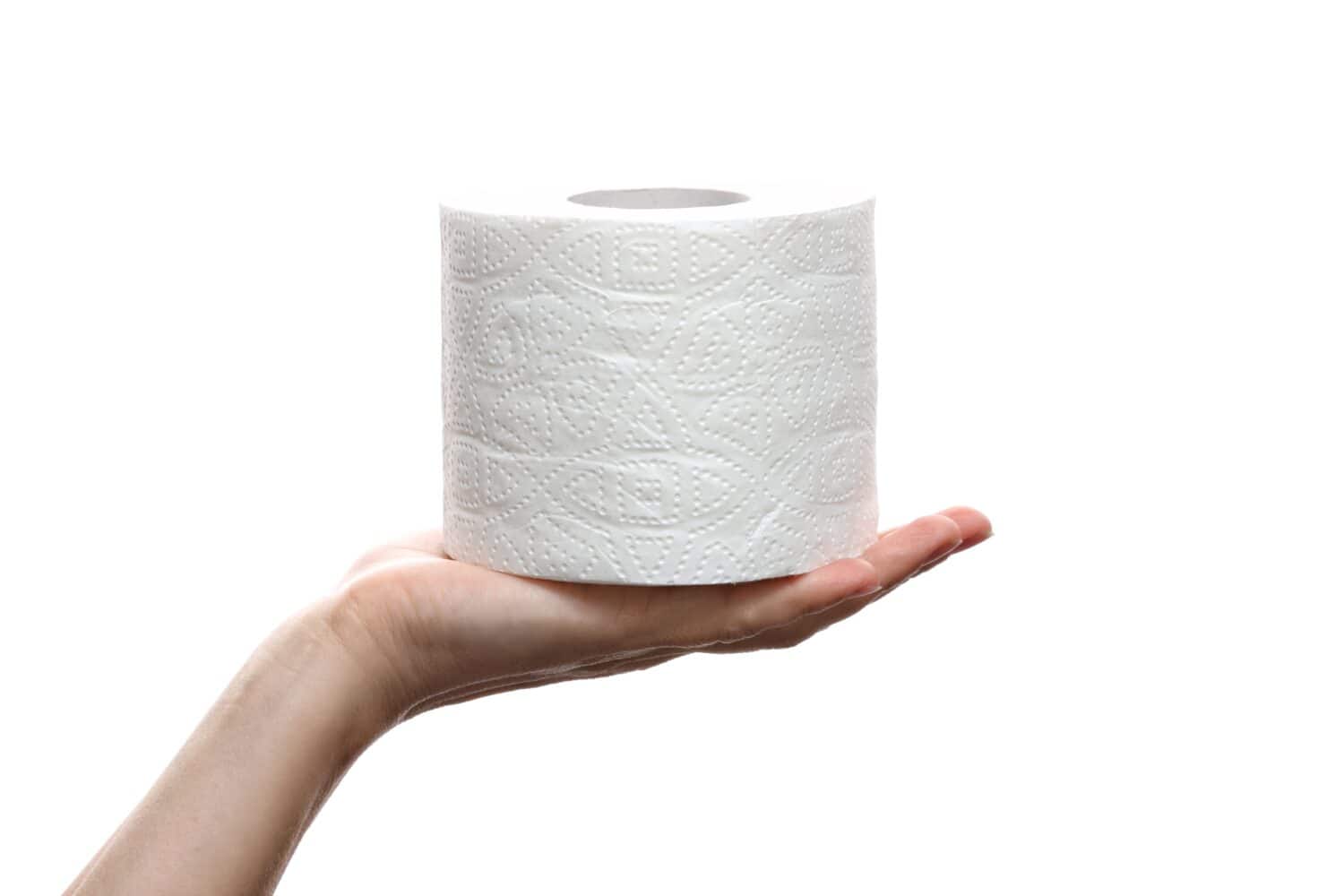
Another contender for an unintentional laxative, Smart Sweets pass the sugar test with only 4 grams, but the sugar substitutes that make that possible can cause flatulence, bloating, soft stool, and diarrhea. The brand is keen about letting you know that isomalto-oligosaccharides are from a vegetable source, though gelatin, another ingredient renders them non-vegetarian. Most curious. Something to ponder while you’re on the throne, I suppose.
Bottom line: Unless you’re medically restricted from consuming sugar…
2. Albanese Sugar-Free Gummies

- parent/owner: Scott Albanese
- amount of sugar per serving: 0 g/sugar alcohols 19 g
- concerning ingredients: Maltitol Syrup, Artificial Flavors, Aspartame, FD&C Yellow#5, FD&C Red #40, FD&C Yellow #6, FD&C Blue #1.
If It Ain’t Broke, Don’t Fix It.
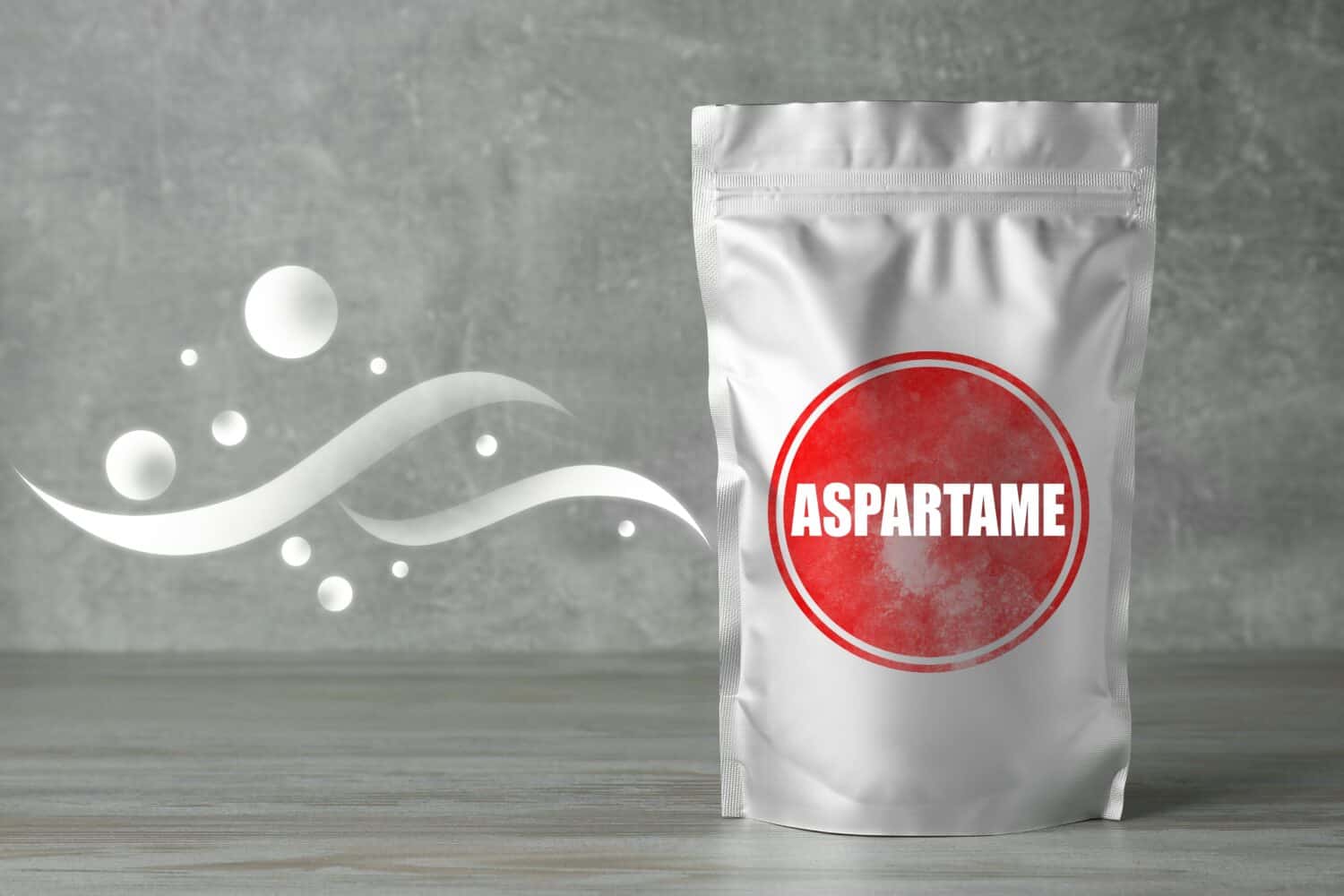
Albanese is a respected name in gummy bears. Glowing reviews liken them to the original (see no.7) only softer and with better flavors. Sadly, someone in the Albanese family determined that they were missing out on their share of the sugar-free gummy market. The result is an atrocious mash-up of sugar substitutes and artificial ingredients. Maltitol Syrup is a highly processed sweetener produced by initially hydrogenating corn syrup – sound familiar? Somewhere in the process, the hydrogenated corn syrup loses its sugars, becoming sorbitol, a sugar substitute. Aspartame, the other sugar substitute in Albanese Sugar-Free Gummies, has a laundry list of associated unsettling side effects, from liver disease to irritability and mood swings. Factor in the artificial colors and flavors and Albanese Sugar-Free gummies are a fiasco.
Bottom line: Stick with what you know.
1. Jelly Belly
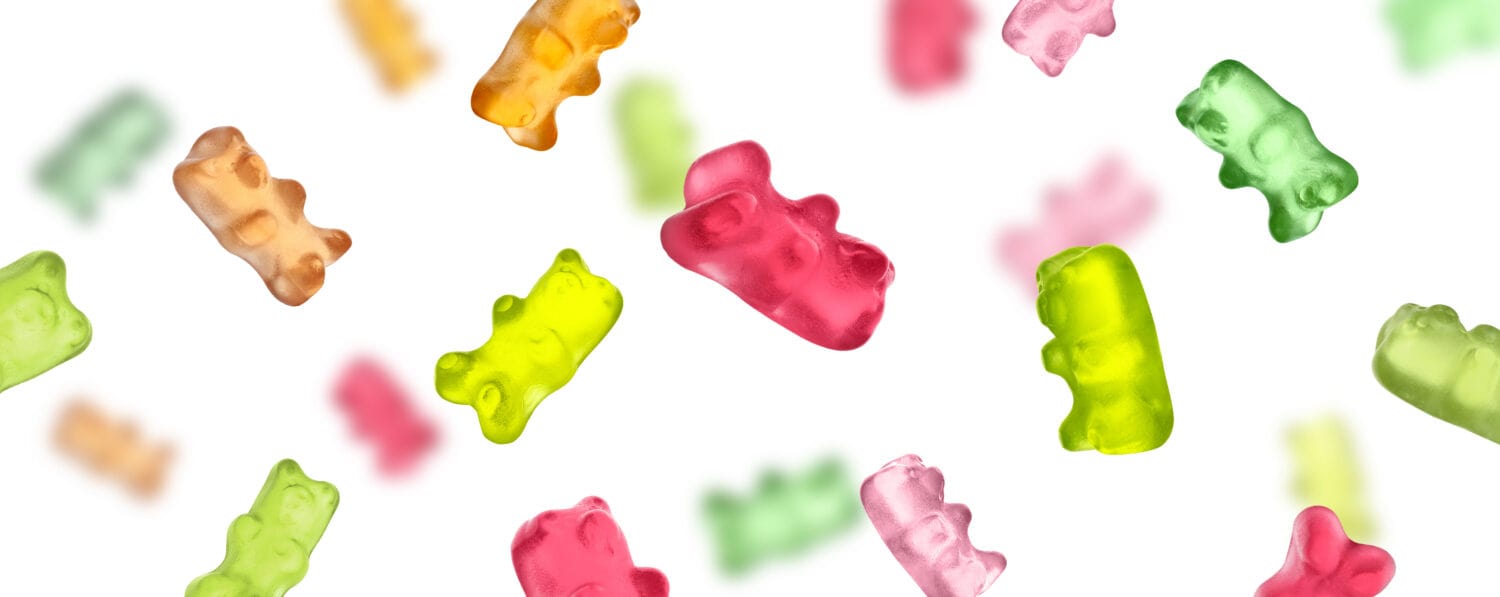
- parent/owner:
- amount of sugar per serving: 26 grams/104 % daily allowance
- concerning ingredients: Ingredients: Corn syrup, sugar, kosher gelatin, sorbitol, artificial flavors, red 40, yellow 5 & 6, blue 1, carnauba wax
Jelly Belly is Full of Beans
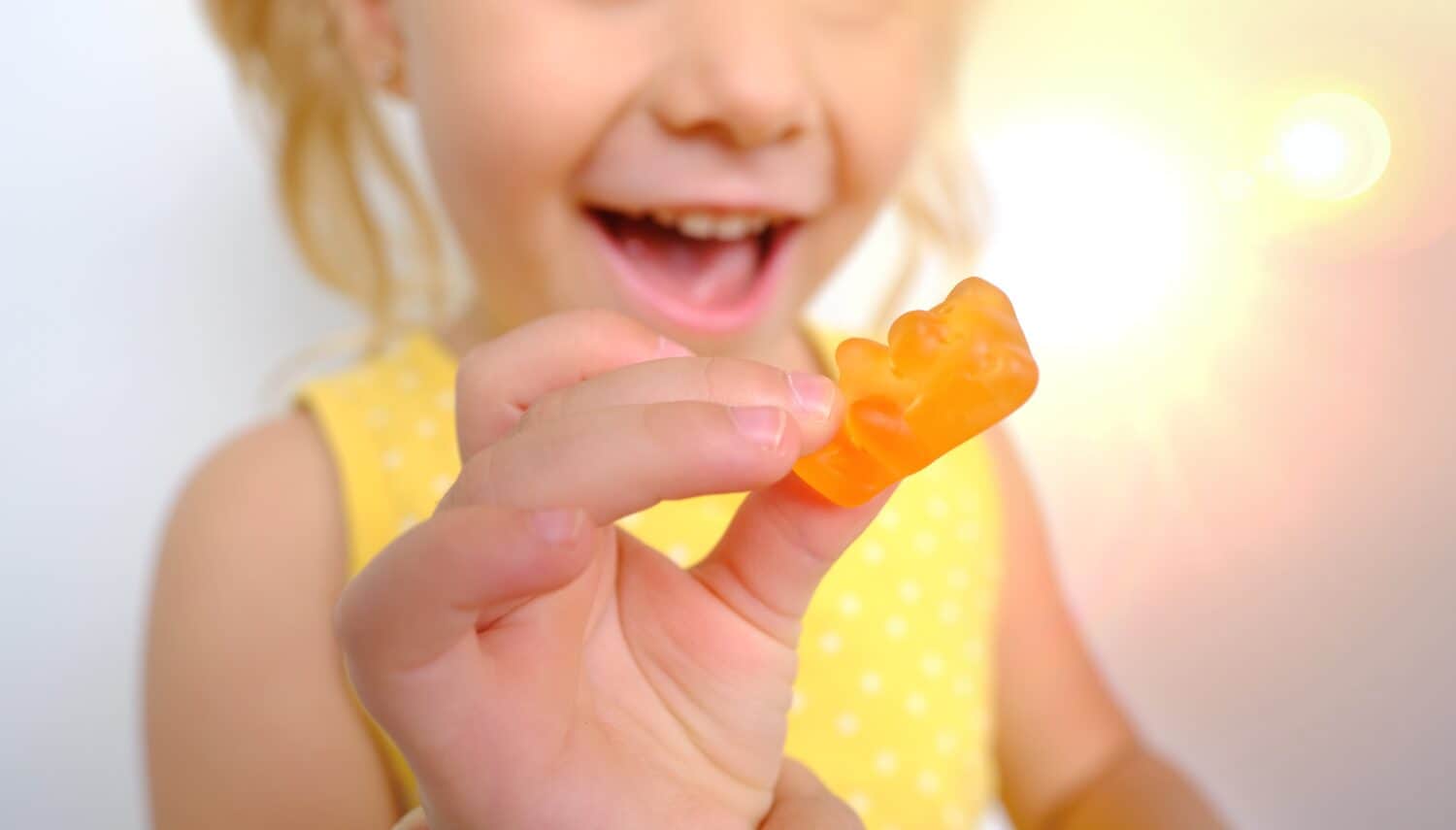
Jelly Belly is number one. And while our number one represents the worst in gummies, Jelly Belly is also the number 1 (but in a good way) name in jelly beans. Stick with what you know, Jelly Belly, stick with what you know. There used to be this idea that folks/companies focused on one thing – McDonald’s and Burger King didn’t originally have chicken on their menus — that was the Colonel’s job. But market shares and bottom lines changed that. Perhaps that would still be ok, except that shareholder profits are more important than using (often more expensive) healthful ingredients. Between the corn syrup and the cane sugar, a serving of Jelly Belly gummy bears serves up a whopping 104% of your daily sugar. The gelatin, kosher or not, renders the gummies unsuitable for vegans and serious vegetarians. And as previously mentioned, the carnauba wax isn’t doing your bum any favors. The artificial colors and flavors are the final blow for this brand.
Bottom line: Jelly Belly makes great jelly beans.
It’s Your Money, Your Future—Own It (sponsor)
Retirement can be daunting, but it doesn’t need to be.
Imagine having an expert in your corner to help you with your financial goals. Someone to help you determine if you’re ahead, behind, or right on track. With SmartAsset, that’s not just a dream—it’s reality. This free tool connects you with pre-screened financial advisors who work in your best interests. It’s quick, it’s easy, so take the leap today and start planning smarter!
Don’t waste another minute; get started right here and help your retirement dreams become a retirement reality.
Thank you for reading! Have some feedback for us?
Contact the 24/7 Wall St. editorial team.



